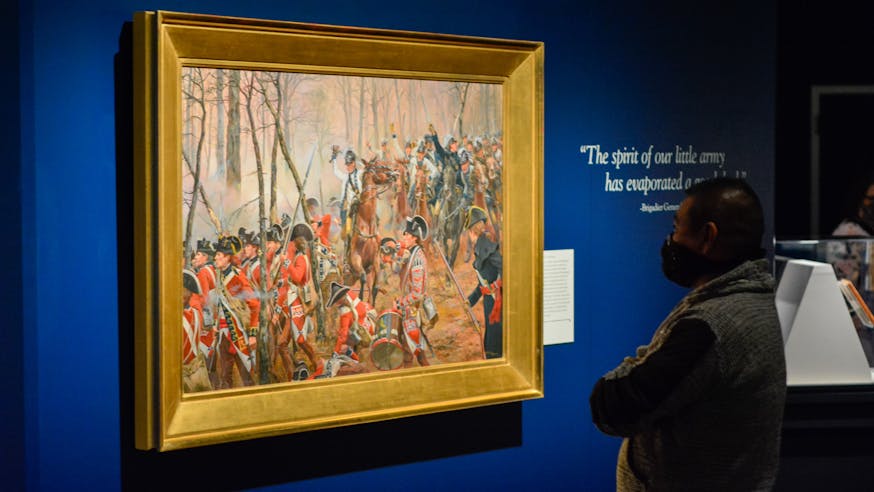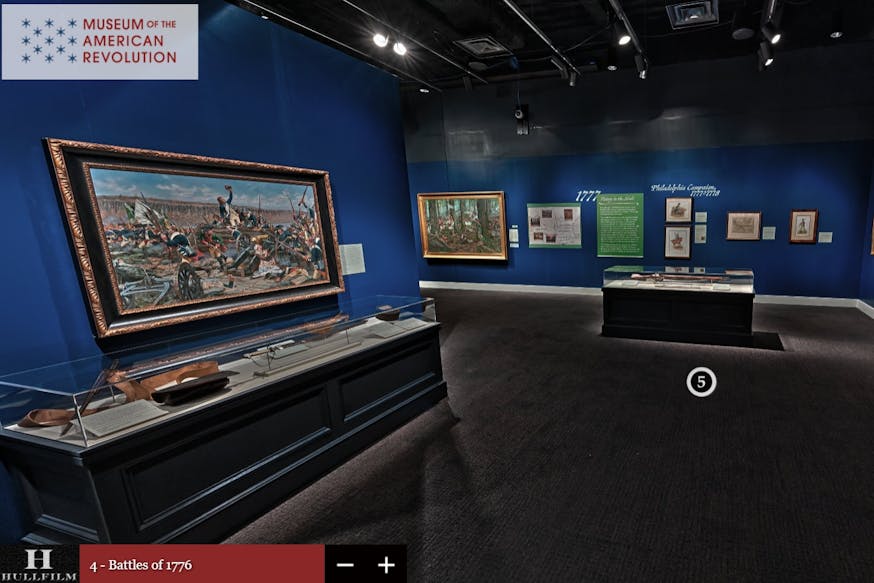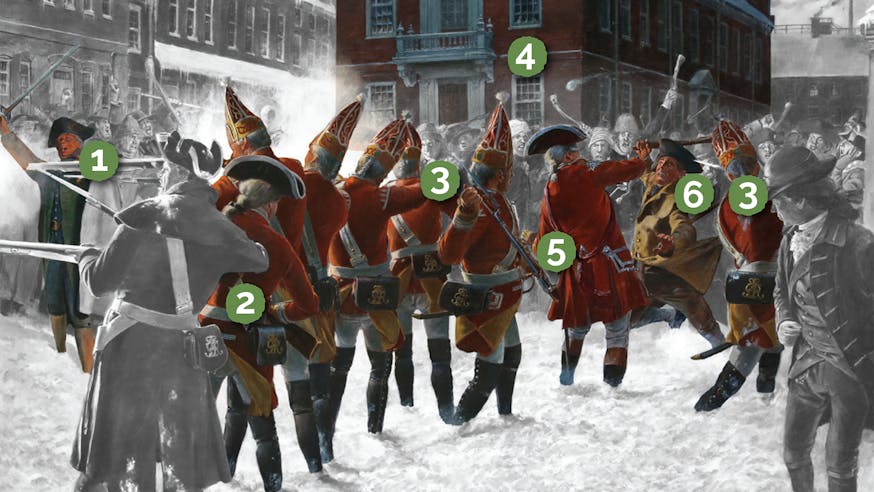Liberty Exhibit
Breaking Down Don Troiani's "Artillery of Independence, Siege of Yorktown" Painting

Following a long march south from the Hudson Highlands, the allied American and French forces under the respective commands of General Washington Washington and General Jean Baptiste Donatien de Vimeur, Comte de Rochambeau, prepared to besiege British Lieutenant General Charles Cornwallis’s army at Yorktown.
On Oct. 9, 1781 Washington himself fired the first American cannon at the Siege of Yorktown. With the ceremonial shot, one member of the Continental Army remembered, “Earl Cornwallis has received his first salutation.” The artillery barrage from 155 French and American howitzers, cannons, and mortars continued for the next 11 days. The flashes of the cannons and the flaring bomb shells lit up the night sky as the allies dug trenches and moved closer to Cornwallis’ army. On Oct. 17, Cornwallis agreed to a cease fire. Almost 15,500 cannonballs and bomb shells had been hurled into Yorktown, about 80 rounds per hour. Two days later, Washington accepted the surrender of Cornwallis’ army.
"Artillery of Independence, Siege of Yorktown, Virginia, October 9, 1781," painted by nationally renowned historical artist Don Troiani and was on display in our Liberty: Don Troiani's Paintings of the Revolutionary War special exhibition, depicts the scene of Washington firing the first shot.

1. Major General Steuben
Steuben and Major General Lafayette led a portion of the Continental Army in Virginia during the summer of 1781. They joined up with General Washington’s army as it approached Yorktown.
2. Stars and Stripes
The Continental Army used a variety of flags (also known as colors) featuring a combination of stars and stripes. The flag shown here is based on a watercolor sketch, likely done by an eyewitness, of an American flag at the Siege of Yorktown. The sketch is part of the papers of Lieutenant Colonel John Graves Simcoe, who led the Loyalist Queen’s Rangers during the siege.
3. General Washington
According to Continental Army surgeon James Thacher, “his Excellency General Washington put the match to the first gun” that the Continental Army fired at the Siege of Yorktown. The 18-pound cannon was one of 155 pieces of artillery used by the French and American allies at the siege.
4. Brigadier General Knox
As the commander of the Continental Artillery, Brigadier General Henry Knox is shown here observing General Washington. Knox, at six feet three inches tall, was even taller than Washington.
5. Continental Artillery
These artillerymen wear blue coats with red facings and brass buttons. Each button was decorated with an image of a cannon. The artilleryman standing next to the wheel of the cannon wears a captured British Royal Artillery cartridge pouch made of buff leather. The three holes on the flap suggest that the brass badge of the British Crown has been removed.
Learn More

Liberty: Don Troiani’s Paintings of the Revolutionary War
October 16, 2021 - September 5, 2022
Liberty Virtual Tour
